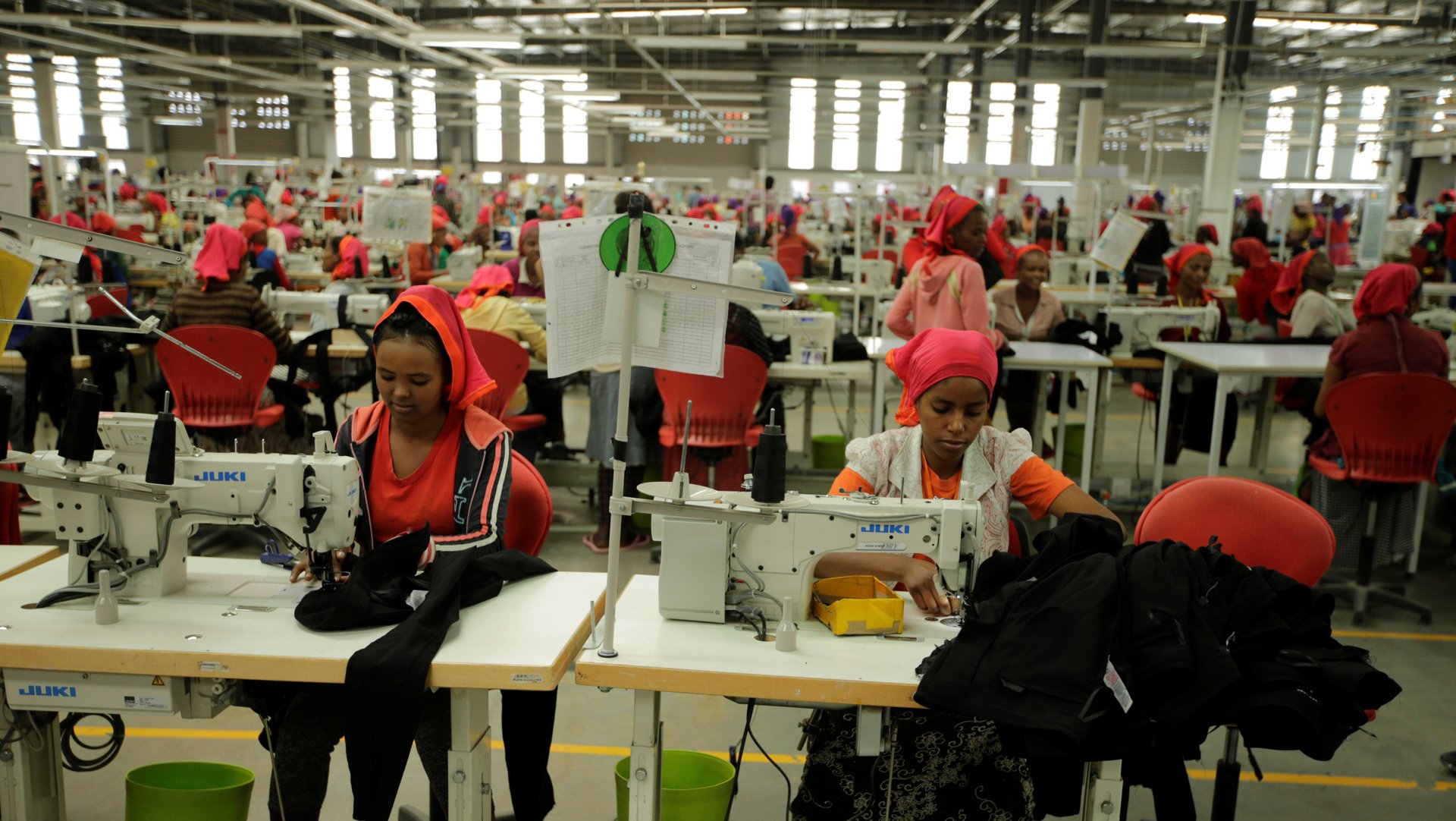Ethiopia’s garment workers make clothes for Guess, H&M, and Levi’s—but are the world’s lowest paid
*An earlier version of this story included The Gap as one of the apparel companies supplied by the Ethiopian factories based on the NYU Stern report. The authors of the report have since corrected their report and say The Gap is not included.


*An earlier version of this story included The Gap as one of the apparel companies supplied by the Ethiopian factories based on the NYU Stern report. The authors of the report have since corrected their report and say The Gap is not included.
For years now, Ethiopia has harbored ambitions to become the world’s next big destination for textile and fashion production.
Yet those aspirations are hurting its own people who are working in factories making clothes for the world’s biggest fashion brands including H&M, Tommy Hilfiger and Calvin Klein among others. Entry-level workers in the country’s garment industry are the lowest paid in the world—earning a mere $26 a month, according to a study from New York University’s Stern Center for Business and Human Rights.
While the government has overseen directives to attract global investment in the sector, that hasn’t translated into prosperity for the employees, who struggle to save, send money home, or afford basic necessities like housing or food.
The authors of the report specifically focused on the Hawassa Industrial Park, built to boost exports and house labor-intensive factories including textile, leather, and agro-processing. Located 140 miles south of the capital Addis Ababa, the park currently has 25,000 employees producing garments for global brands also including Levi’s and Guess.
Yet in the process of positioning the Ethiopia up the rungs of the global textile supply chain, the researchers say the government and manufacturers have failed to take into account critical working conditions. Besides low wages, workers complained about being shouted at by their foreign managers and for not receiving adequate training, leading to a hostile working environment.
And with weak trade union presence in the 105-million people nation, that has hindered employees from organizing to get their grievances heard. Attrition levels at the park stood around 100% too, increasing training costs and lowering efficiency rates.
The report’s findings present a quagmire for Ethiopia, which has tried to position itself as a top apparel sourcing and manufacturing destination. Buoyed by the strong global demand for cheap fashion, the relatively modest costs of setting up garment factories, and the abundance of low-skilled jobs, Addis Ababa plans to boost clothing exports to a total of $30 billion a year from its current $145 million.
Under prime minister Abiy Ahmed, the government has also initiated a series of unprecedented reforms aimed at enhancing economic growth, improving competitiveness, and creating employment opportunities.
Regional neighbors like Rwanda and Kenya have also been competing to expand their manufacturing sectors, with Kigali especially adamant about moving from dressing in secondhand hand-me-downs donated from Western nations.
Yet in this pursuit of bold social experiments, low wage levels have persistently come up as an issue in Ethiopia. Another recent survey of more than 1,000 textile and apparel workers across 52 factories in three regions found 65% earn less than $70 a month. As the Horn of Africa nation situates itself as the “New China,” the authors say the challenge will be if they will be able to learn from the past mistakes of nations like China, Bangladesh, and Cambodia to build a sustainable manufacturing model.
Sign up to the Quartz Africa Weekly Brief here for news and analysis on African business, tech and innovation in your inbox